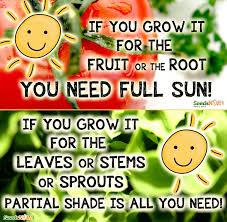This year is not my typical gardening year. In fact, it is totally different. For starters, we moved to a new house so the garden that I have worked so hard to create over the last five years is gone. I was thrilled to see that the new house has three raised beds already there, yippeeee! Due to moving and all the “fun” involved in that process, I have completely missed planting an early spring garden. The three raised beds were completely over run with weeds and looked like no one had taken care of them in years.
Another big change in my garden this year is that the garden only gets part sun. Many varieties of veggies and fruits require full sun so I knew from the beginning that I was going to have to make some changes. There is one part of the garden that gets almost full sun so that area is being reserved for tomatoes and strawberries because they are sun lovers. My garden this year will be considered “experimental” as many of the things I will be growing are new to me. I have been trying to educate myself about shade gardens and I have learned a lot already.
These are truly words to live by when creating a garden and trying to figure out what can go where. In the next post I am going to go over my garden layout and what I am planting where but first I wanted to add some more information about having a part shade garden. I am going to save discussing a full shade garden for another day because that can be pretty tricky with fruits and veggies.
What kind of shade does your garden get?
This is very important to consider because all shade is not created equal. Shade that results from trees hanging overhead is referred to as “dappled shade” vs. shade that results from a building or structure creating the shade. The significance of this is that shade that is created from trees often still lets through some light and may leave a garden looking shaded, but still be pretty bright. True partial shade gardening is certainly tougher than dealing with dappled shade. With that being said though, many wonderful gardens can be grown in part shade. If you are interested in creating more light in your garden you could certainly consider using reflective mulch or other reflective surfaces. At least for this year, I am just going to stick with more traditional gardening.
One of the things that is easy to overlook at you design your garden layout is that the amount of sun and shade that each part of your garden gets is going to change over the course of the season (depending on what type of shade you get). Make sure to take this into account as you plan your garden so that you are not disappointed with the results. This will be very important for me this year because I am planting a few things that actually prefer shade. Many leafy greens prefer cool spring time planting over summer planting because they can not tolerate the heat of the summer. These same greens can however be grown in the summer if they only receive a little bit of sun. If I plant these in an area that will eventually get more sun, then it is very unlikely that I will not get a good yield. I know it is boring and for me hard to remember to do, but spend a week or so tracking the amount of sun your garden gets. Write it down and then use this info to design the layout for your fruits and veggies. This little bit of work will help ensure that your garden has great yields.
If you are interested in more information about shade gardening, please follow my blog and receive updates and articles all season long about gardening in sun and shade.
Next Post: Laying out a part shade garden
